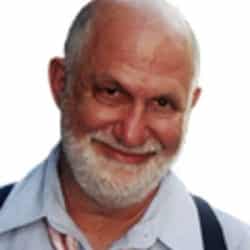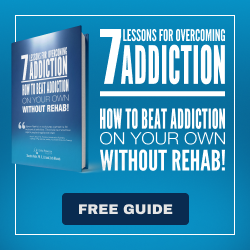Is Bob Dylan an addict in recovery?
Dylan has always had purpose and been engaged.
The new Christmas Dylan film, ”A Complete Unknown: Bob Dylan”, covers his arrival in New York until he pissed people off by going electric.
Introduction
Bob Dylan is being celebrated as our national musical genius. He had some bad times with drugs and alcohol (and he certainly was a smoker). Now in his eighties he seems good. But he never mentions addiction or recovery — only his lifelong dedication to writing and performing music. Any lessons here for us nongeniuses?
Was Dylan an Addict?
Dylan took drugs and drank excessively. Was he addicted?
“Although there are scenes in which Dylan is clearly under the influence of something or other, the movie is strangely circumspect about his substance abuse, perhaps because when he talked about kicking a heroin habit in the mid-1960s, biographers weren’t sure if it was an admission or yet another piece of his self-created myth.”
Source
Young Dylan definitely smoked all the time. And he drank and took drugs in ways that made him befuddled and caused him to behave strangely.
So what about now? Before seeing “Unknown” I watched Martin Scorsese’s 2005 documentary, “No Way Home.”
Scorsese conducted a lengthy interview with Dylan. Dylan doesn’t smoke now. He isn’t befuddled. He is clear headed and incisive about his life, his thinking, his work, his relationships.
Dylan never mentions addiction or recovery.
Is Dylan Autistic?
Sample interviews with Dylan.
Q.: “A Hard Rain’s A-Gonna Fall” is about acid rain, right?
Dylan: “I never thought about that once. I saw some people get drenched and blown around in a sudden storm.”
Interviewer: “It was brave of you to work with Pete Seeger, who was blacklisted as a communist.”
Dylan: “I didn’t know that he was a communist. But it wouldn’t have mattered if I did. I don’t know what a Communist is.
When I first came to New York I had no place to stay and no money. Pete took me home and I played with his kids. We sang a lot of songs.”
Nowadays people proudly announce how at a late age they figured out they were “on the autism spectrum.” They say they have this disorder although they may be functional, even high functioning.
Dylan never mentions autism or characterizes himself as having any mental conditions. He does describe how he relates to scenes he sees, how he writes, what he is trying to convey to audiences through his music.
This is his life purpose in which he is constantly engaged. He is good at it.
How Dylan Became an Unaddicted Non Autistic Nobel Prize Winner
To summarize what the new film and the Scorsese documentary are about: Dylan, age 19, came from a small town in Minnesota to New York City.
He had a lot to learn in New York, where he was a parvenu and absorbed everything around him.
He had to. He didn’t actually know what folk music or country music were. In high school he played popular songs in bands he formed.
The most amazing thing was how he discovered himself. At first he had to learn to sing and behave like a folk artist.
So he ripped off his first album’s material from Dave van Ronk and other folk singers.
But he didn’t like the record he made. So he made a second album of his own material — “The Freewheelin’ Bob Dylan” in 1963 — which included “Girl from the North Country” and “A Hard Rain’s a-Gonna Fall.”
Dylan describes how he didn’t know how to write music. But he had things he wanted to say, so he wrote them. In fact he wrote constantly.
He then quickly released “The Times They Are a-Changin’” and the introspective “Another Side of Bob Dylan” in 1964. In 1965 and 1966, Dylan used electrically amplified rock instrumentation and released three monumental albums: “Bringing It All Back Home”, “Highway 61 Revisited” (both in 1965) and “Blonde on Blonde” (1966).
What Was Dylan Doing?
The Scorsese interview makes plain that Dylan wasn’t pursuing any particular goal or trying to be famous.
He was writing his music. Dylan described why he left behind the music of his high school youth:
“The thing about rock’n’roll is that for me anyway it wasn’t enough … There were great catch-phrases and driving pulse rhythms … but the songs weren’t serious or didn’t reflect life in a realistic way. I knew that when I got into folk music, it was more of a serious type of thing. The songs are filled with more despair, more sadness, more triumph, more faith in the supernatural, much deeper feelings.”
Source: Wikipedia
Dylan’s interview with Scorsese made clear that the same goals led him to electrify — he wanted to express the things he saw, thought and felt.
How Did Dylan Persist?
When fans booed him for “going electric”, he felt he was under assault. But he felt no inclination to change his music.
Instead he withdrew into making studio albums with The Band.
Then he went on his perpetual tour, which he has been on for decades.
He changed his mind.
Then he won the 2016 Nobel Prize for literature marking 50+ years of constant musical innovation.
He’s now 83, looks healthy, and has no apparent addictions.
He doesn’t speak about his recovery or any mental disorders he might have.
He talks about his music.
The “Dylan Solution”
What we can learn from Dylan compared with many other prominent people is that the antidote to addiction and mental illness is engagement and developing a central life skill.
We help people to do that in the Life Process Program – the world’s leading online aa alternative program.






The Scorsese film was No DIRECTION Home. I agree with you that Dylan is very resilient.
A classmate introduced me to Bob Dylan at high school in New Orleans in 1963. Loved him, his voice and his music, though I knew nothing at the time about folk music. Rhythm and Blues, yes. In 1965, when Bob made the transition to electric instruments, I was already a massive fan of British Rock. I followed, and became an enthusiastic, even adoring, lifelong fan.
I have been a Dylan fan since 1962. His music has enriched my life. No one has done more for music!
Bob is a real person and his songs speak to real life